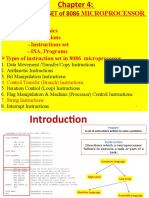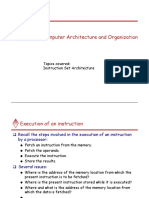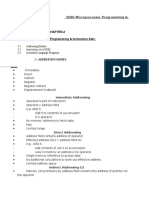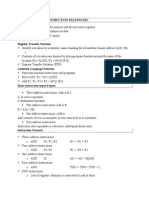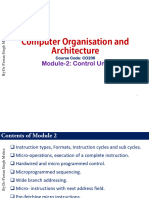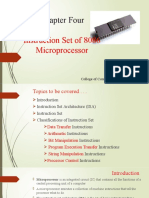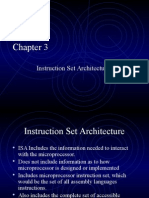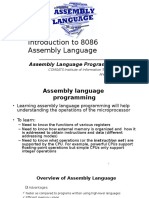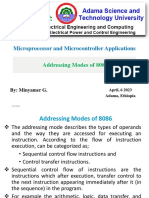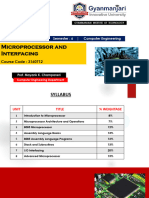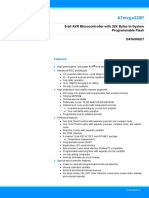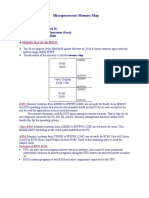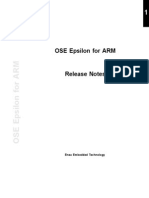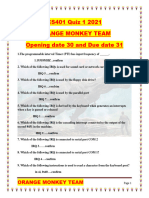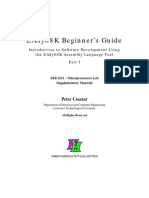0% found this document useful (0 votes)
24 views32 pagesMicroprocessor Design and Course Lecture 4
The document provides an overview of processor memory, specifically focusing on microprocessor registers and their functions within a CPU. It explains the types of memory, the role of the Program Counter and Stack Pointer, and details the structure and components of assembly language instructions. Additionally, it categorizes instructions into groups such as data transfer, arithmetic, logical, and program control, highlighting the 8085 microprocessor's instruction set.
Uploaded by
msimiyu888Copyright
© © All Rights Reserved
We take content rights seriously. If you suspect this is your content, claim it here.
Available Formats
Download as PPTX, PDF, TXT or read online on Scribd
0% found this document useful (0 votes)
24 views32 pagesMicroprocessor Design and Course Lecture 4
The document provides an overview of processor memory, specifically focusing on microprocessor registers and their functions within a CPU. It explains the types of memory, the role of the Program Counter and Stack Pointer, and details the structure and components of assembly language instructions. Additionally, it categorizes instructions into groups such as data transfer, arithmetic, logical, and program control, highlighting the 8085 microprocessor's instruction set.
Uploaded by
msimiyu888Copyright
© © All Rights Reserved
We take content rights seriously. If you suspect this is your content, claim it here.
Available Formats
Download as PPTX, PDF, TXT or read online on Scribd
/ 32



